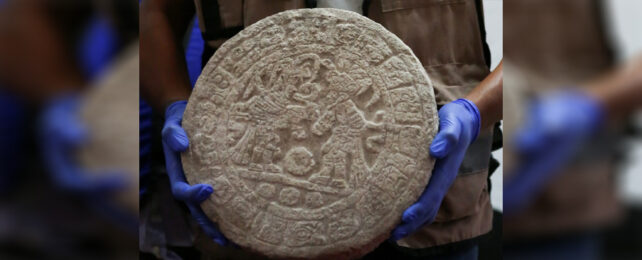An ancient stone "scoreboard" likely used in a soccer-like ball game was discovered at an archeological site in Mexico earlier this week, archaeologists said.
Found at the Maya Chichen Itza site, researchers and archeologists said the circular stone's diameter was just over 32 centimeters (or just over 12 inches), and it weighed 40 kilograms (about 88 pounds), according to a statement from Mexico's National Institute of Anthropology and History on Twitter.
The stone, which is believed to be a kind of scoreboard, dates from between 800 CE and 900 CE.
"In this Maya site, it is rare to find hieroglyphic writing, let alone a complete text," said Francisco Perez, one of the archaeologists coordinating the investigation, according to Reuters.
The stone appears to show two figures in the center, with hieroglyphics surrounding the outer edge. One is wearing a feather headdress, and the other – presumed to be his opponent – is adorned with a "snake turban," reserved for high-ranking individuals in Maya society.
Experts are now in the process of analyzing and interpreting the stone and taking steps to prepare it for conservation.
Iconography experts identified the two figures on the stone as playing the ball game "pelota" – a team game played with a heavy rubber ball, according to the BBC.
Mesoamerican people played the ball game as a form of traditional practice, and it is thought to have had ritual connotations, per Reuters.
The Chichen Itza in the Yucatán peninsula of Mexico is a historical center of Maya civilization, and it is a UNESCO World Heritage Site.
This article was originally published by Business Insider.
More from Business Insider: